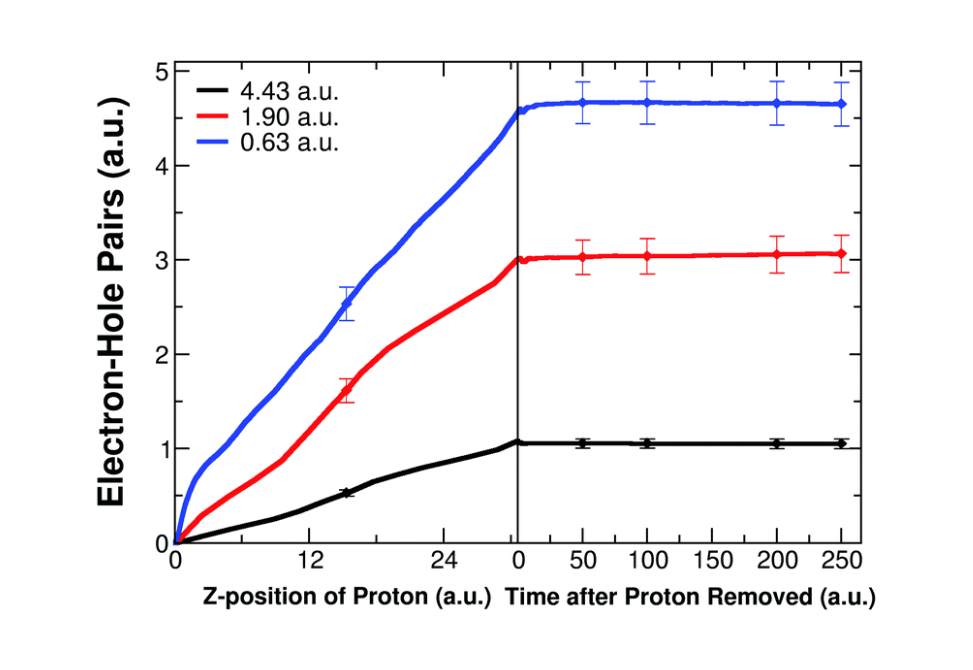Nonlinear electronic excitation in water under proton irradiation: a first principles study
Abstract
Nonlinear dynamics of electronic excitation bridge physical and physicochemical stages of water radiolysis under proton irradiation, a multi-scale physicochemical process that is fundamental to a wide range of technological and medical applications of high-energy protons. We study the spatial and temporal changes to the excited holes generated in this ionization event using first-principles theory simulation. A significant majority of holes are formed in the immediate vicinity of the irradiating proton paths, and these holes decay rapidly, while secondary excitations are simultaneously induced in regions farther away. While the hole population remains constant, the observed spatially spreading hole distribution cannot be described as concentration-dependent diffusion current. Compared to the primary excitation induced by the irradiating protons, the secondary excitation farther away is somewhat less energetic. The first-principles theory simulation here provides a detailed description of how the primary excitation by proton radiation precedes the formation of cationic holes, which undergo ultrafast chemical processes in water radiolysis.
Citation
Shepard, Christopher, and Yosuke Kanai. “Nonlinear Electronic Excitation in Water under Proton Irradiation: A First Principles Study.” Physical Chemistry Chemical Physics, vol. 24, no. 9, Mar. 2022, pp. 5598–603. pubs.rsc.org, https://doi.org/10.1039/D1CP05313B.


